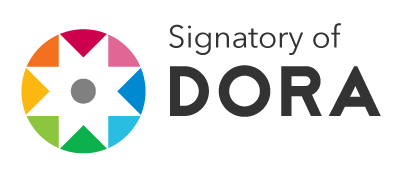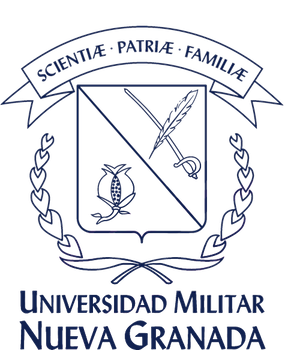Mezclas binarias de líquido iónico con solvente molecular: Predicción del volumen de exceso molar desde índices de refracción
Resumen
El volumen de exceso molar de 30 mezclas binarias que contienen líquidos iónicos de imidazolio con diferentes solventes moleculares: (metanol, etanol, 1-propanol, 2-propanol, acetona, 2- butanona, 2-pentanona, acetato de metilo, acetato de etilo, acetato de butilo, carbonato de dimetilo, carbonato de dietilo, nitrometano, 1,3-dicloropropano y etilenglicol),se predice desde datos de índice de refracción, usando tres tipos de métodos acoplados con diferentes reglas de mezcla para el cálculo del índice de refracción: Lorentz-Lorenz, Dale-Gladstone, Eykman, Arago- Biot, Newton y Oster. En estos sistemas, las interacciones moleculares y las fuerzas intermoleculares provocan, durante la mezcla, desviaciones positivas o negativas del comportamiento ideal. Los resultados obtenidos se analizan en términos de la naturaleza del líquido iónico y solvente molecular.Descargas
Lenguajes:
esAgencias de apoyo:
Universidad del Valle, Universidad de PamplonaReferencias bibliográficas
Earle M.; and Seddon K. (2000) Ionic liquids. Green solvents for the future, En: Pure Appl. Chem., Vol. 72 (7), pp. 1391-1398. http://dx.doi.org/10.1351/pac200072071391
Olivier H. (1999). Recent developments in the use of non-aqueous ionic liquids for twophase catalysis, En: J. Mol. Catal. A. Vol. 146, pp. 285-289. http://dx.doi.org/10.1016/S1381-1169(99)00114-4
Olivier-Bourbigou H. and Magna L. (2002). Ionic liquids: perspectives for organic and catalytic reactions, En: J. Mol. Catal. A. Vol. 182-183, pp. 419-437. http://dx.doi.org/10.1016/S1381-1169(01)00465-4
Zhu J.; Chen J.; Li C; and Fei W. (2007). Centrifugal extraction for separation of ethylbenzene and octane using 1-butyl-3-ethylimidazolium hexafluorophosphate ionic liquid as extractant, En: Sep. Purif. Technol. Vol.56, pp. 237-240. http://dx.doi.org/10.1016/j.seppur.2007.01.026
Matkowska D.; Goldon A.; and Hofman T. (2010). Densities, Excess Volumes, Isobaric Expansivities, and Isothermal Compressibilities of the 1-Ethyl-3-methylimidazolium Ethylsulfate + Ethanol System at temperatures (283.15 to 343.15) K and Pressures from (0.1 to 35) MPa, En: J. Chem. Eng. Data. Vol. 55, pp. 685-693. http://dx.doi.org/10.1021/je900414p
Welton T. (1999). Room-Temperature Ionic Liquids. Solvents for Synthesis and Catalysis. En: Chem. Rev. Vol. 99, pp. 2071-2083. http://dx.doi.org/10.1021/cr980032t
Alonso L.; Arce A.; Francisco M.; and Soto A. (2008). Phase behaviour of 1 methyl-3-octylimidazolium bis [trifluoromethylsulfonyl]imide with thiophene and aliphatic hydrocarbons: The influence of n-alkane chain length. En: Fluid Phase Equilib. Vol. 263,pp. 176–181. http://dx.doi.org/10.1016/j.fluid.2007.10.010
Anantharaj R.; and Banerjee T. (2011). COSMO-RS based predictions for the desulphurization of diesel oil using ionic liquids: Effect of cation and anion combination. En: Fuel Proc. Tech. Vol. 92, pp. 39–52. http://dx.doi.org/10.1016/j.fuproc.2010.08.018
Herbert M.; Galindo A.; and Montilla F. (2007). Catalytic epoxidation of cyclooctene using molybdenum(VI) compounds and urea-hydrogen peroxide in the ionic liquid [bmim]PF6. En: Catal. Commun. Vol. 8, pp. 987–990. http://dx.doi.org/10.1016/j.catcom.2006.10.008
Chen P. (2007). The assessment of removing strontium and cesium cations from aqueous solutions based on the combined methods of ionic liquid extraction and electrodeposition. En: Electrochim. Acta. Vol. 52, pp. 5484–5492. http://dx.doi.org/10.1016/j.electacta.2007.03.010
Berthod A.; Ruiz-Angel M.; and Carda-Broch, S. (2008). Ionic liquids in separation techniques. En: J. Chromatogr. A. Vol. 1184, pp. 6–18. http://dx.doi.org/10.1016/j.chroma.2007.11.109
Heintz, A. (2005). Recent developments in thermodynamics and thermophysics of nonaqueous mixtures containing ionic liquids. A review. En: J. Chem. Thermodynamics. Vol. 37, pp. 525–535. http://dx.doi.org/10.1016/j.jct.2005.04.003
Zhu A.; Wang J.; and Liu R. (2010). A volumetric and viscosity study for the binary mixtures of 1-hexyl-3-methylimidazolium tetrafluoroborate with some molecular solvents. En: J. Chem. Thermodynamics., doi:10.1016/j.jct.2010.12.027. http://dx.doi.org/10.1016/j.jct.2010.12.027
Kurnia K.; Taib M.; Mutalib M.; and Murugesan T. (2011). Densities, Refractive Indices and Excess Molar Volumes for Binary Mixtures of Protic Ionic Liquids with Methanol at T = (293.15 to 313.15) K. En: J. Mol. Liq., doi:10.1016/j.molliq. 2011.01.005.
Shekaari H.; Mansoori Y.; and Sadeghi R., (2008). Density, speed of sound, and electrical conductance of ionic liquid 1-hexyl-3-methyl-imidazolium bromide in water at different temperatures. En: J. Chem. Thermodynamics. Vol. 40, pp. 852–859.http://dx.doi.org/10.1016/j.jct.2008.01.003
Wang J.; Jiang H.; Liu Y.; and Hua Y. (2010). Density and surface tension of pure 1-ethyl-3-methylimidazolium L-lactate ionic liquid and its binary mixtures with water. En: J.Chem. Thermodynamics., doi:10.1016/j.jct.2010.12.026. http://dx.doi.org/10.1016/j.jct.2010.12.026
Domanska U. (2006). Thermophysical properties and thermodynamic phase behavior of ionic liquids. En: Thermochim. Acta. Vol. 448, pp. 19–30. http://dx.doi.org/10.1016/j.tca.2006.06.018
Aralaguppi M., Jadar C., and Aminabhavi T. (1999). Density, Refractive Index, Viscosity, and Speed of Sound in Binary Mixtures of Cyclohexanone with Hexane, Heptane, Octane, Nonane, Decane, Dodecane, and 2,2,4-Trimethylpentane. En: J. Chem. Eng. Data. Vol. 44, pp. 435-440. http://dx.doi.org/10.1021/je9802266
Radovic I., Kijevcanin M., Gabrijel M., Serbanovic S., and Djordjevi B. (2008). Prediction of excess molar volumes of binary mixtures of organic compounds from refractive indices. En: Chemical Papers. Vol. 62 (3), pp. 302–312. http://dx.doi.org/10.2478/s11696-008-0027-x
Pi-eiro Á., Brocos P., Amigo A., Pintos M., and Bravo R. (1999). Surface tensions and refractive indices of (tetrahydrofuran + n-alkanes) at T=298.15 K. En: J. Chem. Thermodynamics. Vol. 31, pp. 931–942. http://dx.doi.org/10.1006/jcht.1999.0517
Nakata M., and Sakurai M. (1987). Refractive index and excess volume for binary liquid mixtures. Part 1. Analyses of new and old data for binary mixtures. En: Journal of the Chemical Society, Faraday Transactions 1. Vol. 83, pp. 2449–2457.http://dx.doi.org/10.1039/f19878302449
Heller W. (1965). Remarks on refractive index mixture rules. En: The Journal of Physical Chemistry. Vol. 69, pp. 1123–1129. http://dx.doi.org/10.1021/j100888a006
Pereiro A.; and Rodriguez A. (2007). Study on the phase behaviour and thermodynamic properties of ionic liquids containing imidazolium cation with ethanol at several temperatures. En: J. Chem. Thermodynamics. Vol. 39, pp. 978–989. http://dx.doi.org/10.1016/j.jct.2006.10.017
Pereiro A.; and Rodríguez A. (2007). Thermodynamic Properties of Ionic Liquids in Organic Solvents from (293.15 to 303.15) K. En: J. Chem. Eng. Data. Vol. 52, pp. 600-608. http://dx.doi.org/10.1021/je060497d
Pereiro A.; Tojo E.; Rodriguez A.; Canosa J.; and Tojo J. (2006). Properties of ionic liquid HMIMPF6 with carbonates, ketones and alkyl acetates. En: J. Chem. Thermodynamics. Vol. 38, pp. 651–661. http://dx.doi.org/10.1016/j.jct.2005.07.020
Pereiro A.; and Rodriguez A. (2008). Measurement and correlation of (liquid + liquid) equilibrium of the azeotrope (cyclohexane + 2-butanone) with different ionic liquids at T = 298.15 K. En: J. Chem. Thermodynamics. Vol. 40, pp. 1282–1289. http://dx.doi.org/10.1016/j.jct.2008.03.011
González E.; González B.; Calvar N.; and Domínguez A. (2007). Physical Properties of Binary Mixtures of the Ionic Liquid 1-Ethyl-3 methylimidazolium Ethyl Sulfate with Several Alcohols at T) (298.15, 313.15, and 328.15) K and Atmospheric Pressure. En: J. Chem. Eng. Data. Vol. 52, pp. 1641-1646. http://dx.doi.org/10.1021/je700029q
Gómez E.; González B.; Calvar N.; Tojo E.; and Domínguez A. (2006). Physical Properties of Pure 1-Ethyl-3-methylimidazolium Ethylsulfate and Its Binary Mixtures with Ethanol and Water at Several Temperatures. En: J. Chem. Eng. Data. Vol. 51, pp. 2096-2102. http://dx.doi.org/10.1021/je060228n
Iglesias-Otero M.; Troncoso J.; Carballo E.; and Romaní L. (2008). Density and refractive index in mixtures of ionic liquids and organic solvents: Correlations and predictions. En: J.Chem. Thermodynamics. Vol. 40, pp. 949–956. http://dx.doi.org/10.1016/j.jct.2008.01.023
Reis J.; Lampreia I.; Santos A.; Moita M.; and Douhéret G. (2010). Refractive Index of Liquid Mixtures: Theory and Experiment. En: ChemPhysChem. Vol. 11, pp. 3722-3733. http://dx.doi.org/10.1002/cphc.201000566












